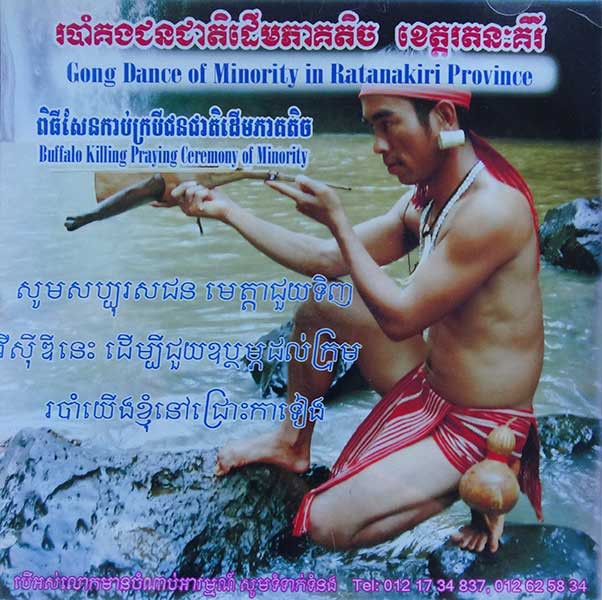

-
1. Audio Sample 1
-
2. Audio Sample 2
Video CD (VCD) with video and audio of a buffalo sacrifice ceremony by the indigenous animistic Tampuan tribe, who reside in Ratanakiri province of Cambodia.
This VCD is Khmer-produced. Sound- and image quality is low, and there is a general lack of context, explanation and translation of what is shown on this VCD.
Length is approximately one hour.
Combined with the six other indigenous groups who live there, the Tampuan form the majority of the ethnic make up of the population of Ratanakiri. Many Tampuan live in villages close to Ratanakiri's provincial capital, Ban Lung, in an area around a large volcanic crater lake, Yeak Laom, formed thousands of years ago. Others live in scattered communities in the province, many of which are to be found around the small town of Voeun Sai. But wherever they live, the Tampuan are today on the border of irreversible lifestyle and cultural changes. On the old side of this border Tampuan tradition is dominated by traditional belief: spirits live among them; illness is cured by herbal medicines and animal sacrifice; Tampuan mythology and folklore define their identity; money does not exist — Indigenous Tampuan people barter is the only currency through which to conduct the trading of goods. On the new side is a transition from Animism to Buddhism and Christianity and the use of Western medicines.
The Tampuan consist of about 31,000 people and have their own language of the Mon–Khmer language family. Though historically their language has been without a writing system, in the last ten years an NGO has overseen the creation of a writing system, based on the Cambodian alphabet.
Tampuans have a matrilineal system of marriage, with the family name and inheritance passing through the mother’s side of the family. Normally, Tampuans marry between the ages of fourteen and eighteen. In accordance with tradition, the young couple lives with and serves the family of the bride for three years, and then moves to serve the grooms family for an additional three years. At this point, the young couple is considered to be of age, capable of starting their own farm. Bigamy is tolerated but not common.
Most Tampuans are subsistence farmers, practicing a form of rotational slash and burn agriculture. The land surrounding the village is communally owned, with each village member planting on his designated section.
Tampuans are animists, believing that spirits inhabit all things. Spirits, and especially evil spirits, must be appeased through animal sacrifices. Violating the evil spirit’s commands causes sickness. Mediums and sorcerers are common, and are paid to speak the will of the spirits.
The Tampuans are a very musical people. They learn from a young age to play fiddles, a harp-like instrument called gungtheng, drums, flutes, and gongs. Gongs are their most important instruments. The gongs are made of hammered bronze, and consist of a set of five for rhythm and another set of eight for the melody. Playing gongs is a communal affair; thirteen men play gongs and two play percussion. Often the gongs are accompanied by dancing. Traditionally, men play instruments and women sing.
- Condition: NM (CD) / NM (Cover)
- ● For art and/or science projects the contents of this VCD, and our own fieldrecordings of the Tampuan we made in 2010 and 2011, are available on request. Send us an email with your enquiry ●